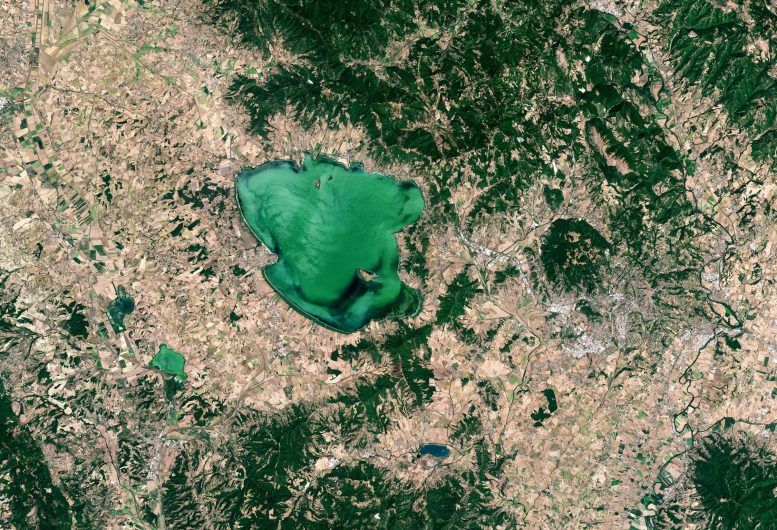
In this Copernicus Sentinel-2 image, captured on August 6, 2022, the lake’s emerald green color is likely due to the presence of phytoplankton. Streaks in the water, particularly visible in the west, indicate the presence of soil and sediments which have been stirred up by winds. Dark-colored waters in the southern part of the lake indicate a presence of submerged and floating macrophytes (aquatic plants) as well as algae. Credit: Contains modified Copernicus Sentinel data (2022), processed by ESA, CC BY-SA 3.0 IGO
Lake Trasimeno, the fourth largest lake in Italy, is featured in this week’s European Space Agency (ESA) Earth From Space image.
Lake Trasimeno is located in central Italy, around 20 km (12 miles) west of Perugia, and encompasses an area of around 128 sq km (50 square miles). It is shallow, only reaching a maximum depth of around 6 meters (20 feet), although the lake’s water level varies depending on meteorological and climatic conditions.
Lake Trasimeno, also referred to as Trasimene or Thrasimene in English, is a lake in the province of Perugia, in the Umbria region of Italy on the border with Tuscany. The lake is south of the river Po and north of the nearby river Tiber. Trasimeno is shallow, muddy, and rich in fish, including pike, carp, and tench.
In this Copernicus Sentinel-2 satellite image, captured on August 6, 2022, the lake’s emerald green color is most likely due to the presence of phytoplankton. Streaks in the water, particularly visible in the west, indicate the presence of soil and sediments that have been stirred up by strong winds. Dark-colored waters in the southern part of the lake indicate the presence of submerged and floating macrophytes (aquatic plants) as well as algae.
Surrounded by hills on three sides, Trasimeno is subject to heavy storms created by winds, especially from the north and west. There are three islets in the lake: Maggiore, Minore, and Polvese (the largest). The lake’s shores are sparsely inhabited with only two popular villages: Castiglione del Lago and Passignano sul Trasimeno.
Italy is experiencing its worst drought in 70 years which has affected drinking water supplies, hydroelectric power, and agricultural production. High temperatures, hot winds, and lack of rainfall are the main causes of drought in the Umbrian region which saw Lake Trasimeno drop 1.3 m (4.2 feet), reaching the limit of the hydrometric zero in July 2022.
In this week’s edition of the Earth From Space program, the Copernicus Sentinel-2 mission takes us over Lake Trasimeno, the fourth-largest lake in Italy. Credit: ESA
Lake Trasimeno wasn’t the only Italian water body affected by drought this summer, with the Po River hitting record lows. The Copernicus Sentinel-2 satellites capture high-resolution imagery that provides information about the conditions on Earth, such as water quality, plant life, and coastal areas.
The mountainous terrain of the Umbrian Apennine Mountains surrounds Lake Trasimeno with many agricultural fields dotted around the area. Several other smaller lakes including Lake Montepulciano, Lake Chiusi, and Lake Pietrafitta, can be seen south of Lake Trasimeno. Perugia, capital of the Umbria region, is a well-known cultural and artistic center in Italy known for its chocolate and jazz festivals.
This image is also featured on ESA’s weekly Earth From Space series, in the video embedded above.




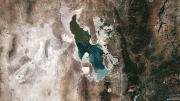
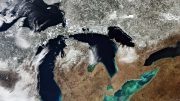
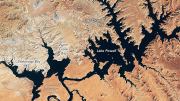
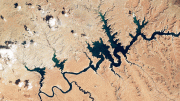
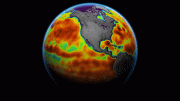
Be the first to comment on "Exploring Earth From Space: Lake Trasimeno – The Fourth Largest Lake in Italy"